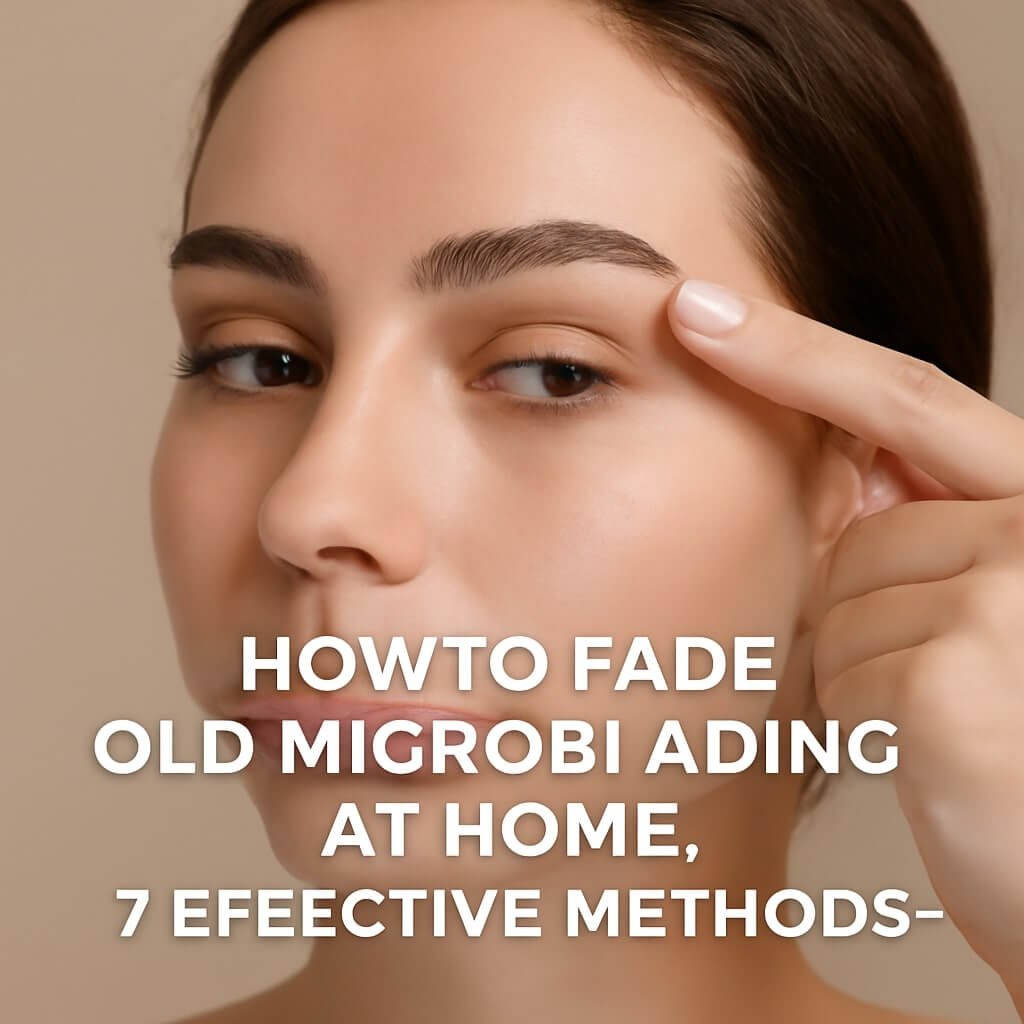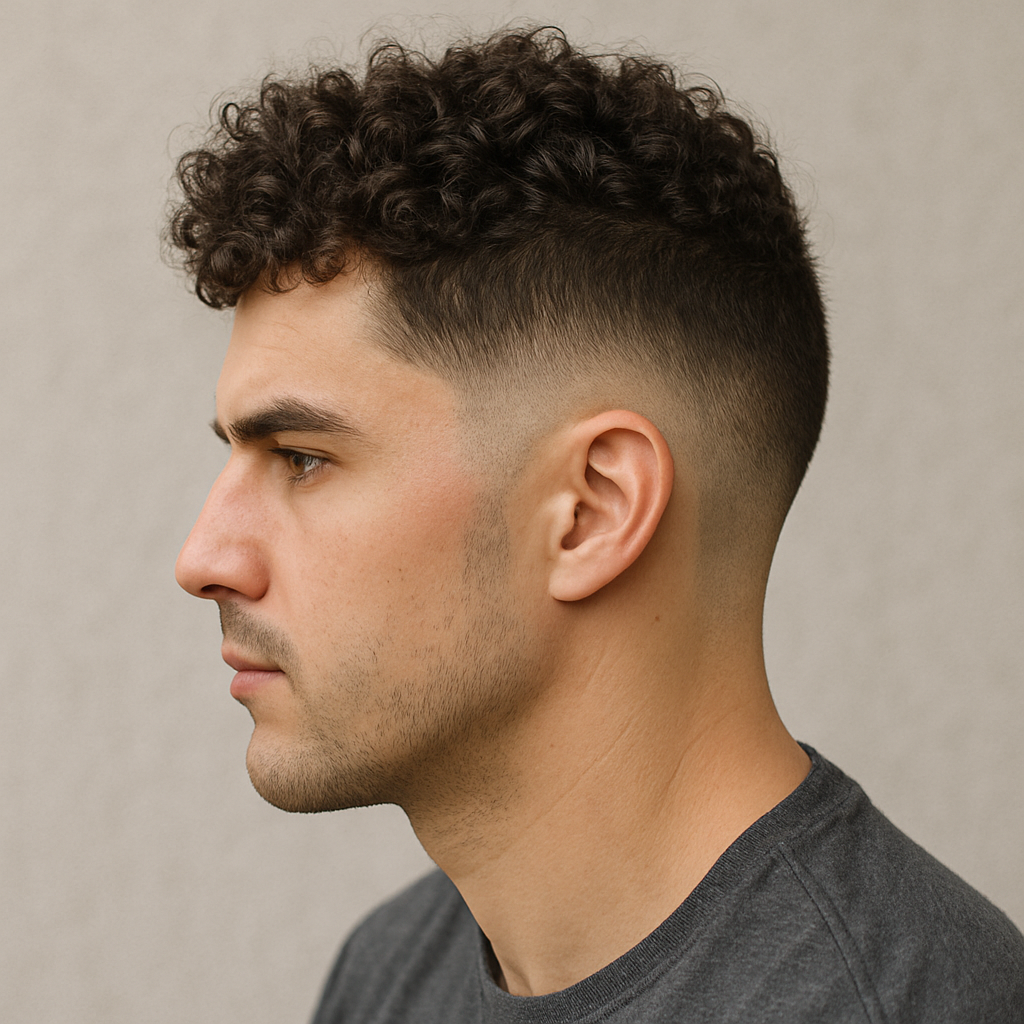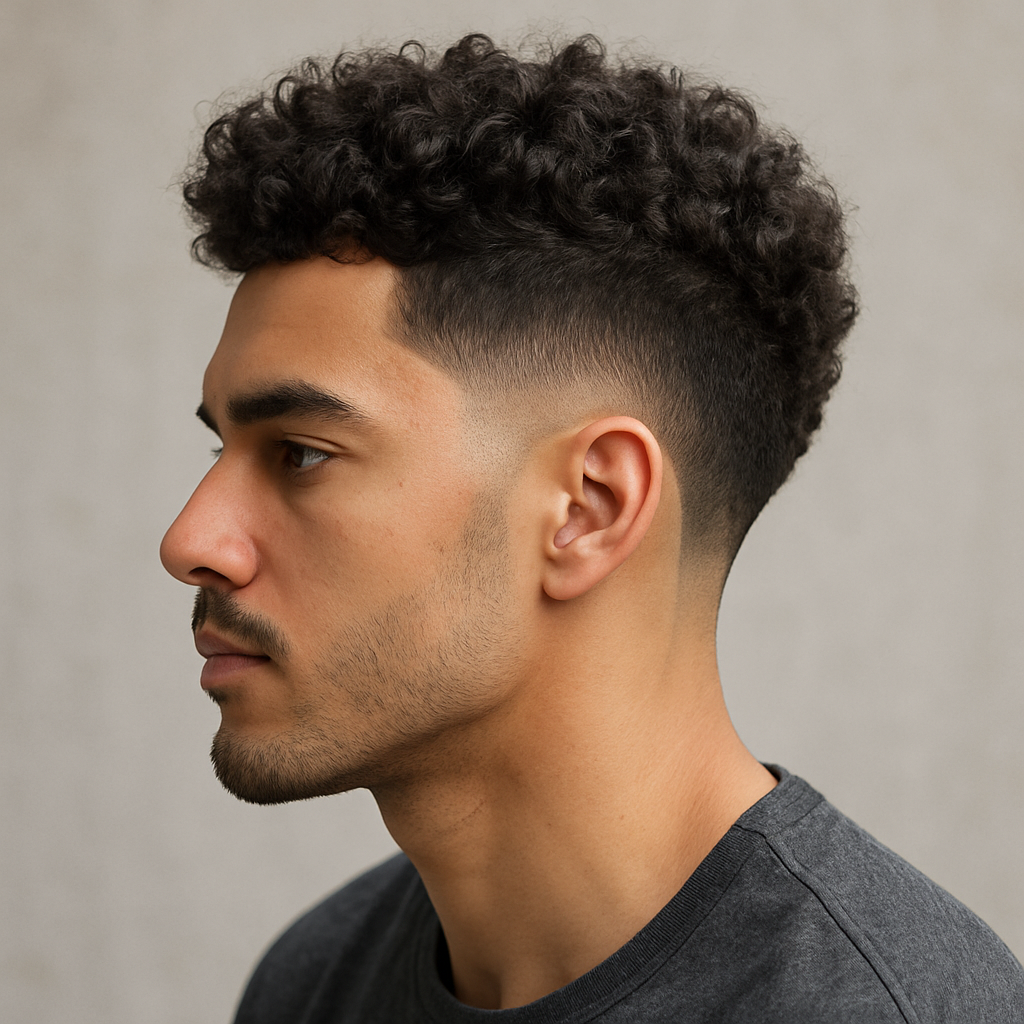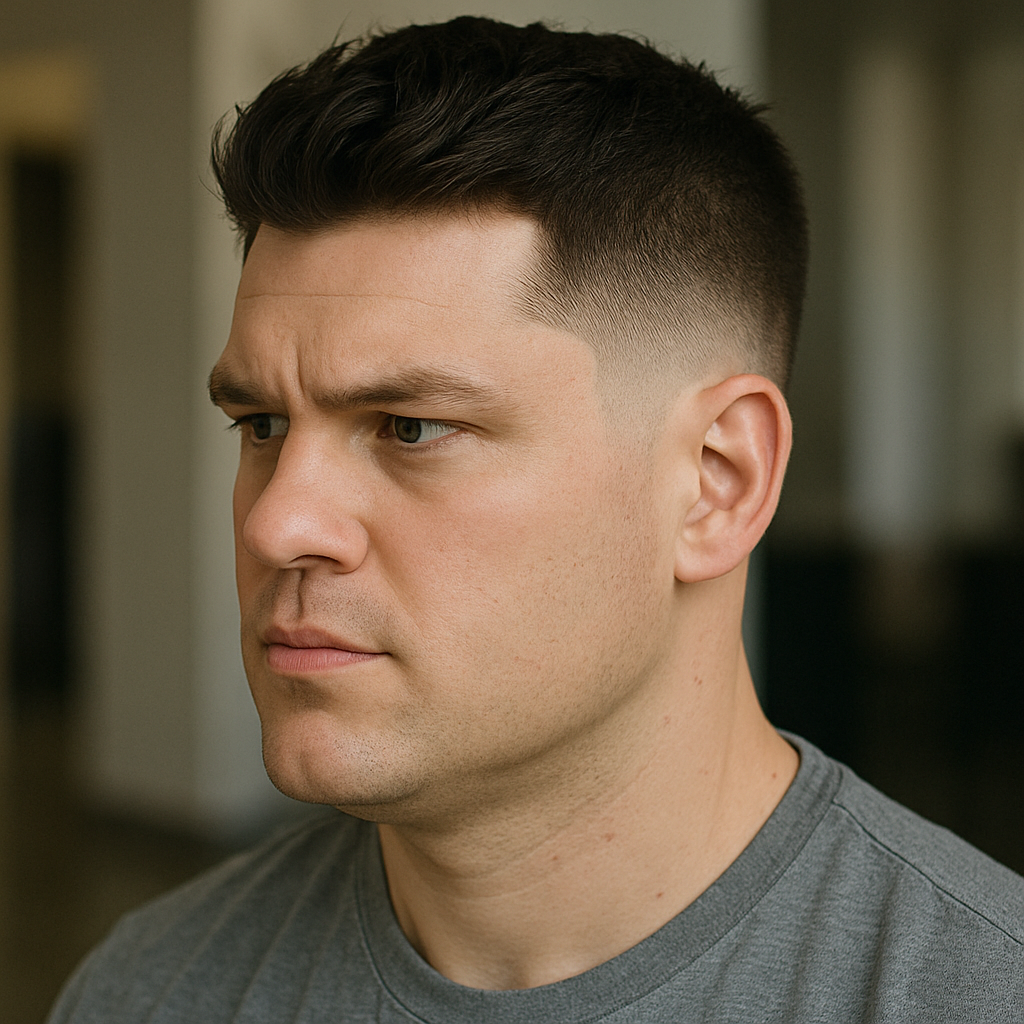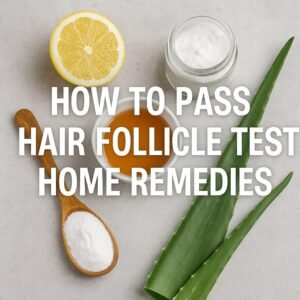Microblading is a popular semi-permanent makeup technique that enhances eyebrows by creating hair-like strokes for a fuller, more defined look. However, as time passes, some people may want to fade or lighten their old microblading, either because the colour has darkened or the style no longer suits them. Knowing how to fade old microblading at home can save time and money compared to professional removal methods.
In this comprehensive guide, we will explore seven effective and safe ways to fade old microblading at home. You’ll also learn why microblading fades, factors influencing its longevity, aftercare tips, and answers to frequently asked questions. Whether you want to prepare for a touch-up or completely remove the pigment, this article will guide you through everything you need to know.
Understanding Microblading and Why It Fades
What is Microblading?
Microblading is a form of cosmetic tattooing that deposits pigment into the upper layers of the skin using a handheld tool with tiny needles. Unlike traditional tattoos, microblading creates natural-looking, hair-like strokes that enhance the eyebrows’ shape and fullness. Since the pigment is implanted superficially, the results last between 12 to 18 months before gradually fading.
Reasons for Fading Microblading
Over time, microblading fades naturally due to several reasons:
- Skin Regeneration: The skin’s natural exfoliation process gradually pushes out the pigment.
- Sun Exposure: UV rays break down pigment molecules, leading to colour fading.
- Skin Type: Oily skin tends to fade microblading faster than dry or normal skin.
- Aftercare: Lack of proper aftercare can cause premature fading or uneven pigment retention.
- Quality of Pigment and Technique: Low-quality pigments or inexperienced technicians can cause quicker fading.
Understanding these factors can help manage expectations and improve fading techniques.
Factors Affecting Microblading Longevity
Skin Type and Care Routine
The type of skin you have plays a major role in how long your microblading lasts. For example:
| Skin Type | Effect on Microblading Longevity |
|---|---|
| Oily | Faster fading due to excess oil shedding pigment |
| Dry | Longer retention with slower fading |
| Combination | Moderate fading rate |
Additionally, how you care for your eyebrows post-microblading influences fading. Regular exfoliation, harsh skincare products, and excessive touching can cause the pigment to fade faster.
Environmental and Lifestyle Factors
External factors also affect microblading longevity:
- Sun Exposure: Regular exposure to sunlight can cause pigment to break down.
- Skincare Products: Ingredients like retinol, alpha hydroxy acids (AHAs), and exfoliants accelerate fading.
- Lifestyle: Activities like swimming, frequent sweating, or using makeup removers can contribute to pigment loss.
Taking these into account helps when planning home fading methods.
How to Fade Old Microblading at Home Safely
If you’re wondering how to fade old microblading at home safely, there are several gentle and effective methods to try. Remember, patience is key—these methods take time and consistent care.
Natural Exfoliation Techniques
Gently exfoliating the skin around your eyebrows helps speed up the fading process by removing dead skin cells that hold pigment. Some ways to exfoliate include:
- Use a soft washcloth or gentle facial scrub twice a week.
- Applying mild chemical exfoliants containing AHAs or BHAs cautiously.
- Avoid aggressive scrubbing to prevent skin irritation.
Using Vitamin C Serum
Vitamin C is known for its skin-brightening properties and ability to reduce pigmentation. Applying a vitamin C serum daily on the microbladed area can lighten the pigment gradually. Be sure to use a serum formulated for sensitive skin and perform a patch test before regular use.
Application of Retinoids
Retinoids promote skin cell turnover, which can help fade microblading pigment over time. Products containing retinol or tretinoin (available by prescription) may speed up pigment fading, but they should be used carefully to avoid irritation, especially near delicate eyebrow skin.
Lemon Juice and Other Natural Remedies
Lemon juice is a natural bleaching agent and is often touted for lightening skin and pigmentation. You can try applying diluted lemon juice on the area for short periods, but beware of potential irritation or dryness. Other natural remedies include aloe vera and honey mixtures, which soothe skin while promoting lightening.
Professional-Grade Fading Creams
There are over-the-counter creams formulated specifically to fade tattoos and pigment, often containing ingredients like hydroquinone or kojic acid. These can be effective but must be used under guidance due to the risks of skin irritation or discolouration.
When to Avoid Aggressive Treatments
Avoid harsh at-home treatments like strong chemical peels or abrasive scrubs as these can cause scarring, pigment loss in patches, or infection. Always prioritise skin safety and consult a dermatologist if unsure.
Comparing Home Remedies with Professional Removal Methods
While fading old microblading at home is possible, sometimes professional treatments may be necessary for quicker or more complete removal.
Laser Removal
Laser removal targets pigment with concentrated light, breaking it down for the body to absorb. This method can be effective but carries risks such as scarring or skin discolouration, especially in delicate areas like eyebrows.
Saline Removal
Saline removal uses a saltwater solution injected into the skin to lift pigment out. It’s less aggressive than laser but requires multiple sessions and is still best performed by professionals.
Microdermabrasion and Chemical Peels
These exfoliating treatments can assist in lightening pigment but are generally less effective alone and should be combined with other methods.
Tips for Aftercare During the Microblading Fade Process
Proper aftercare is essential while trying to fade microblading to protect skin health and avoid complications.
Sun Protection
Always apply broad-spectrum SPF 30 or higher on your eyebrows daily to prevent further pigment darkening or skin damage.
Moisturising and Healing
Keep the skin hydrated with gentle, fragrance-free moisturisers to promote healing and reduce irritation.
Avoiding Irritants
Steer clear of harsh skincare products, makeup, and treatments near the eyebrow area to prevent adverse reactions.
Frequently Asked Questions (FAQs)
1. How long does it take to fade old microblading at home?
Fading can take several weeks to months, depending on your skin type, the pigment used, and the fading method.
2. Is it safe to use lemon juice on microbladed eyebrows?
Lemon juice can cause irritation and dryness, so it should be diluted and used sparingly with caution.
3. Can I speed up fading with retinol products?
Yes, retinoids promote skin turnover, but they should be used carefully to avoid irritation.
4. Will sun exposure fade my microblading faster?
Yes, UV rays break down pigment, but excessive sun can damage skin, so use sun protection.
5. Are professional removal methods better than home remedies?
Professional methods tend to work faster and more thoroughly,y but are more expensive and carry risks.
6. Can I use makeup to cover old microblading while fading?
Yes, mineral makeup or concealers can temporarily mask pigment during the fading process.
Conclusion
Fading old microblading at home is achievable with patience, care, and the right methods. From gentle exfoliation and vitamin C serums to natural remedies and professional-grade creams, there are various ways to lighten unwanted pigment safely. Always prioritise skin health by protecting from sun damage, avoiding irritants, and considering professional advice if necessary.
If you decide to pursue professional removal methods, be sure to consult experienced practitioners to minimise risks. Ultimately, understanding your skin and the microblading process empowers you to achieve the best possible results.
